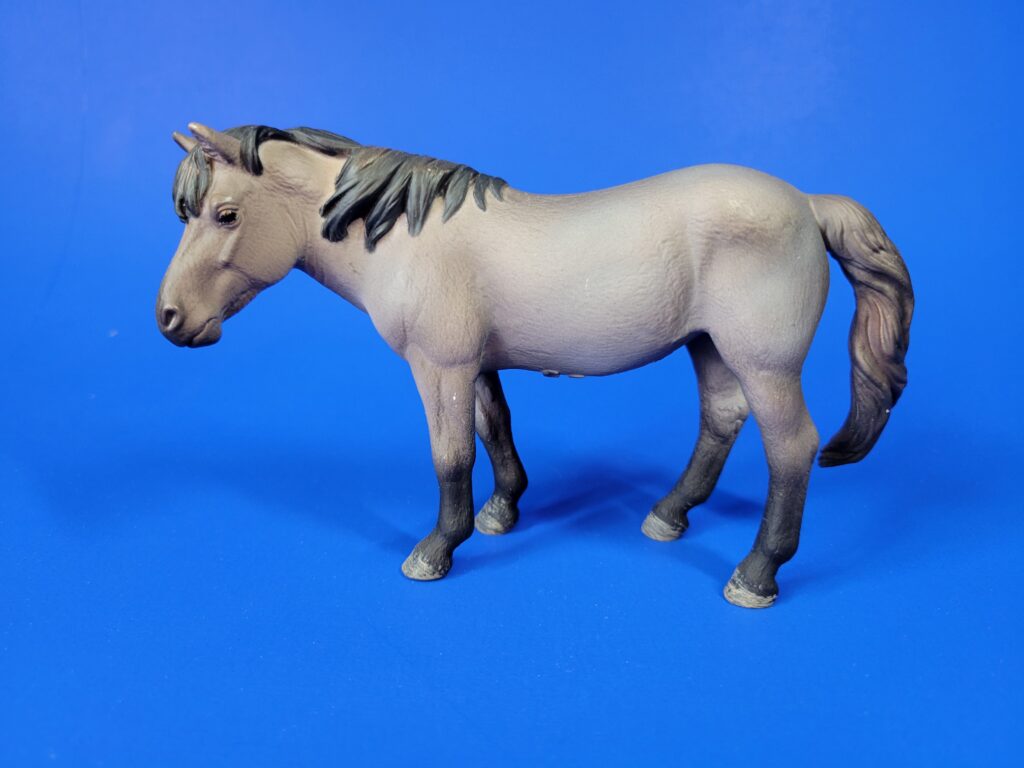
I would like to kindly thank Happy Hen Toys for providing this wonderful sample model for review! The Polish Konik horse is a breed with very murky origins and lots of myths surrounding it. The animals certainly descend from very sturdy, stocky, and hardy animals from Central Europe and they may have hybridized with various domestic equines over the years. The most popular theory is that they descend from the now extinct wild Tarpan, a breed that roamed the same area and does share an uncanny resemblance to the Konik. However, modern genetic studies have disproved this theory and instead found that they share genes from a wide variety of domestic horses. CollectA released this model under the product number #88926 in 2021 alongside a foal.
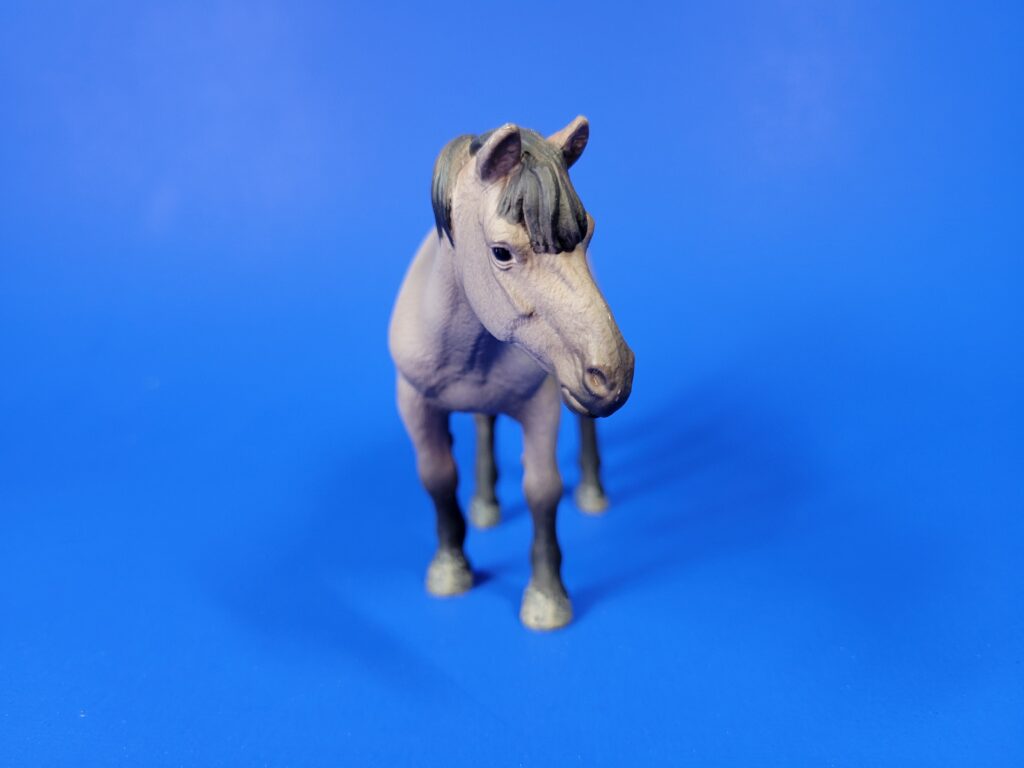
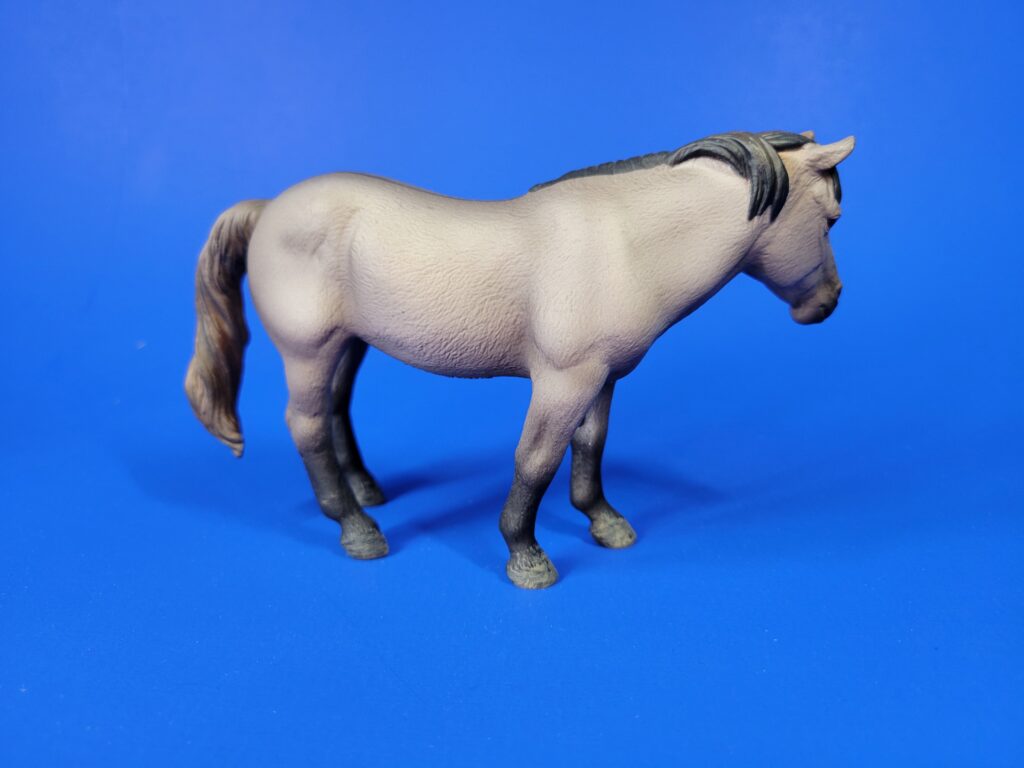
Earliest records of captive Koniks date back to 1806 where some farmers obtained a handful of Konik horses and began to cross them with local draft breeds. By WWI these horses were heavily relied upon on both sides of the conflict for transport of troops and machinery. After the Great War Tadeusz Vetulani coined the name “konik” which means “small horse” in Polish. Around this time several studs were put forward for both public and private breeding endeavors to try and conserve a then rare animal. As per tradition, they were kept as semi-feral; left to wander freely on land reserves and find their own forage but with some level of human influence on selective breeding. This meant that when they weren’t being actively used for selective breeding programs they could interbreed with any locally available horse stock. Vetulani himself was hoping that allowing them to behave in a feral state might help them retrieve their wild phenotype (AKA the wild Tarpan like traits)- this did not in fact occur. Again, after WWII the famed German Heck brothers (Heinz and Lutz) began their breeding experiment to recreate the Tarpan; by crossing Przewalksi stallions with Konik mares as well as Dulmener, Gotland Russ, and Icelandic mares which resulted in the Heck horse- an animal with a Tarpan like phenotype. In more modern exploits, the Konik has been bred to Anglo-Arabians and Thoroughbreds in an attempt to increase the Konik’s comfort as a riding horse and has also been used in turn to develop other breeds like the Trakehner.
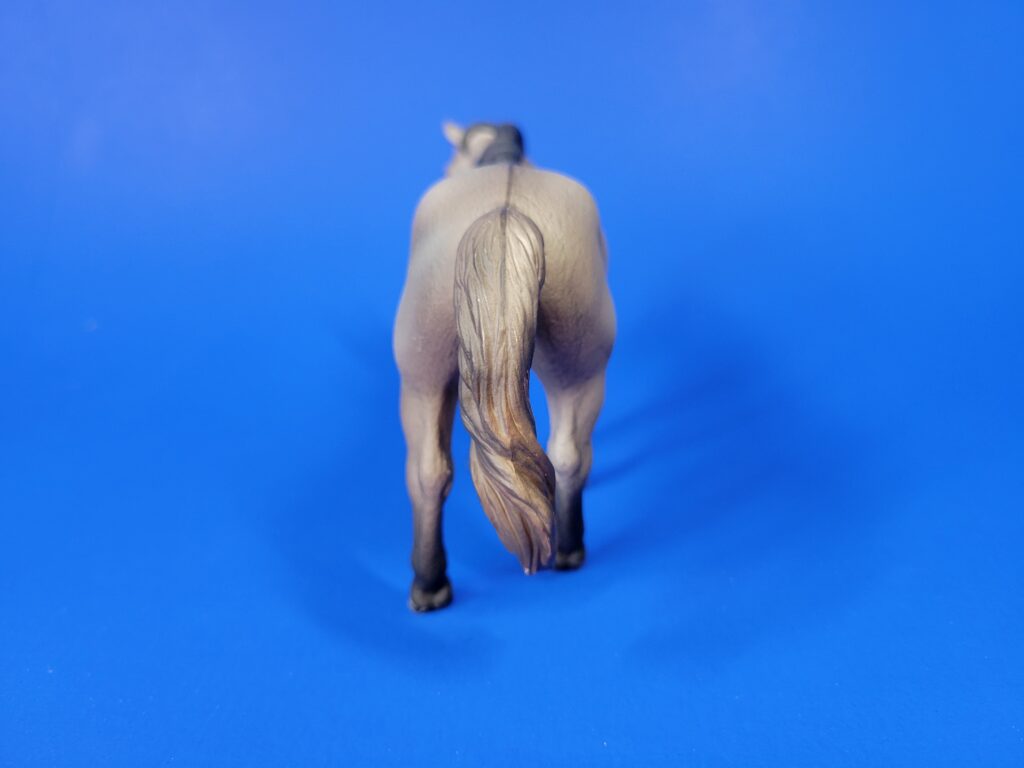
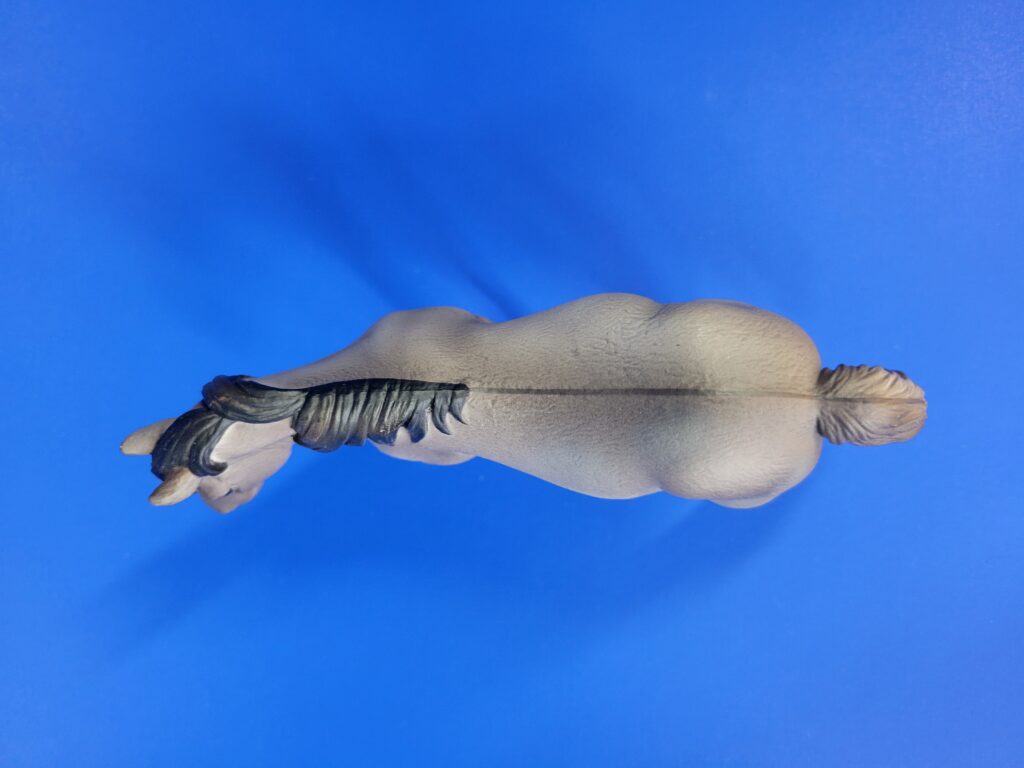
Either in domestic settings or on reserves, this breed is still heavily studied and continues to undergo breeding efforts for conservation. In some regions, these programs are so successful the population becomes too much for the land to support it and management has come into conflict with the public on a political level.
The breed is generally described as being blue or grey; this color in the breed is referred to as dun. They can throw black or sorrel colored colts and some may even have white markings, but these are generally considered unacceptable colors for the breed. They are small horses standing at only 12.3-13.3 hh and have a sturdy build, wide chest, and a low set neck. Their face should have a straight profile with a thick mane and tail and winter coat. Their muzzle, mane, tail, and lower legs are often darker in color. The breed is generally very healthy compared to other domestic bred horses but they can have allergies to hay if raised in a domestic barn setting (as opposed to a semi-wild horse) and can have some hoof diseases.
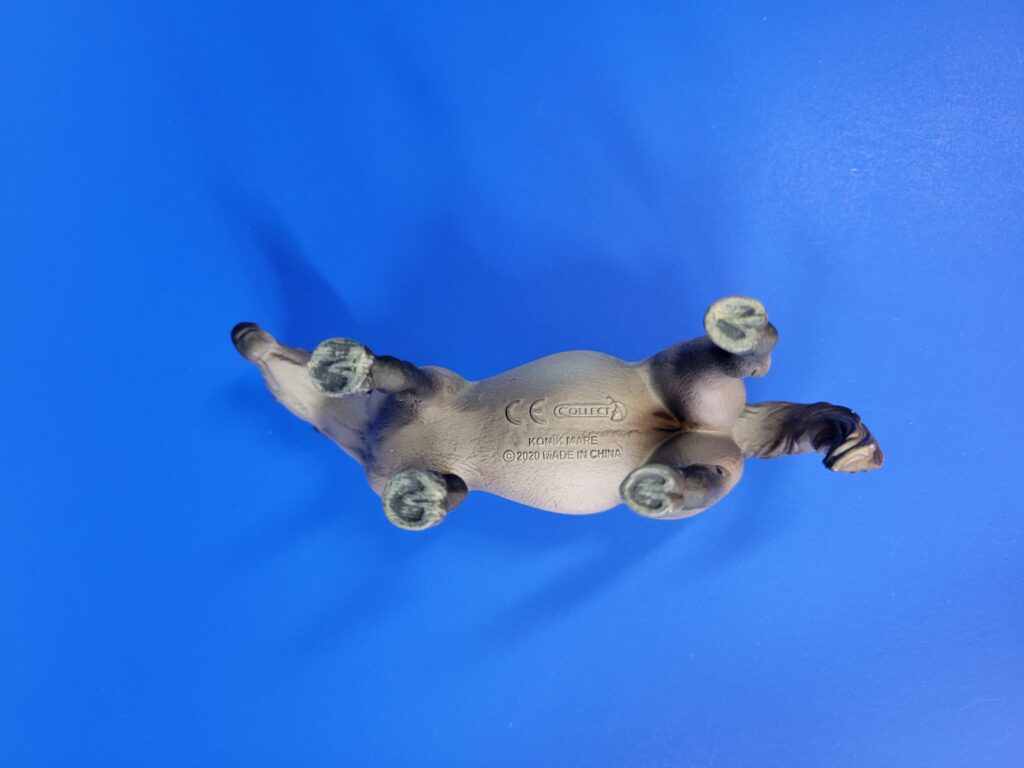
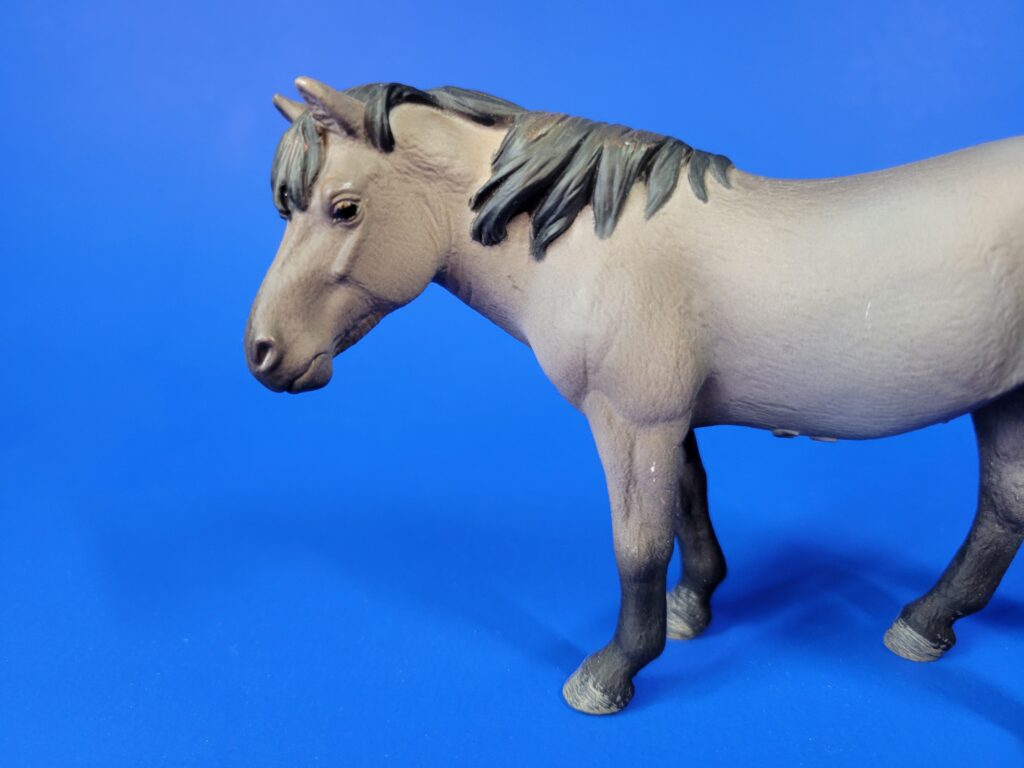
This little figure is that of a mare in a neutral pose. She is the classic gray dun coloration but does not have the completely black points that most of this breed present, she instead shows a medium darkness over her lower legs and muzzle, while her mane is mostly black and her tail transitions from a mouse gray to the darker black. She has her tail ever so slightly raised from the resting position, and her ears are pricked forward with her head turned to the left as she appraises something in her view. She has the stocky build of the breed but maintains a certain feminine quality to her look.
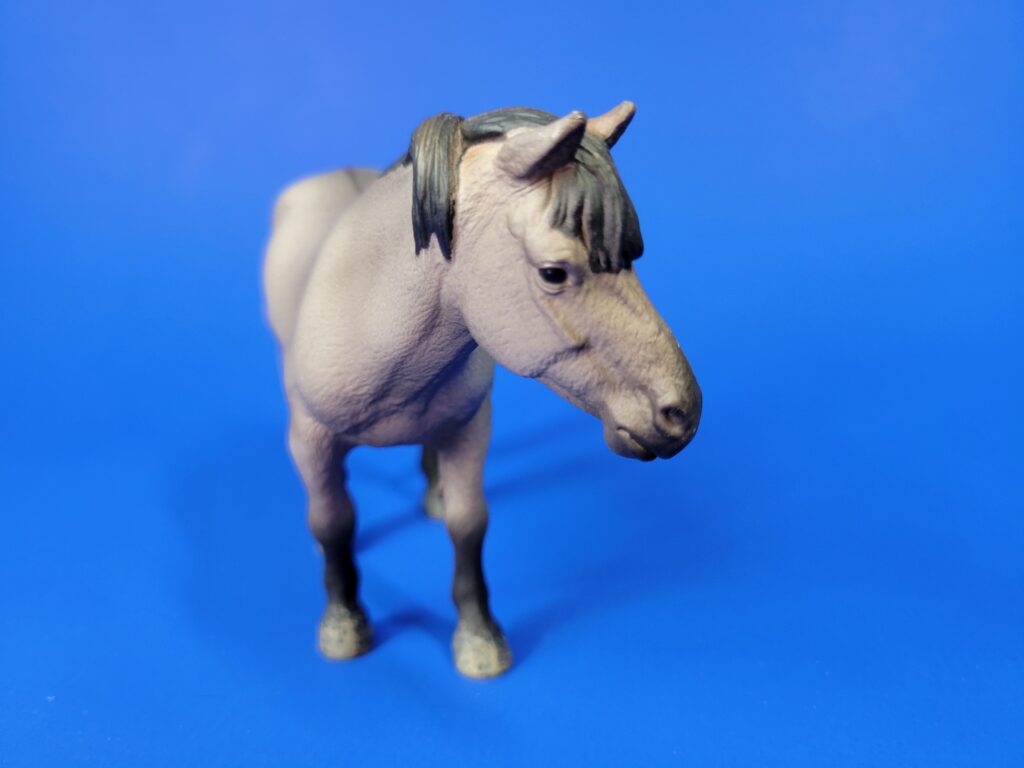
This is a rather rare and lesser known horse breed that I would recommend to anyone who shares an interest in domestic equines. Thank you again to Happy Hen Toys for this sample figure- check their store out for any of your animal collecting needs!
Disclaimer: links to Ebay and Amazon on the AnimalToyBlog are affiliate links, so we make a small commission if you use them. Thanks for supporting us!




